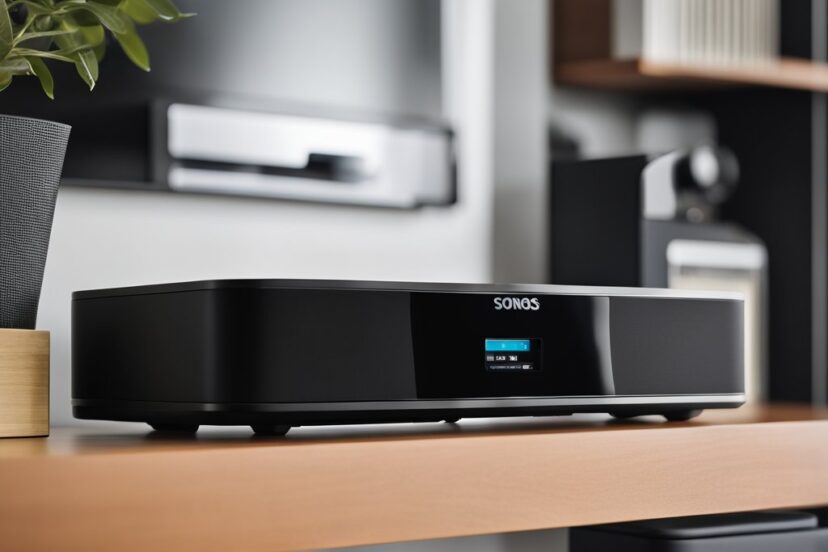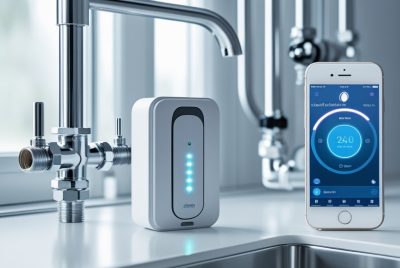Sonos Port Review: Top Streaming Solution?
*We may earn a commission for purchases made using our links. Please see our disclosure to learn more.
Sonos Port Review: Top Streaming Solution?
Tapping into the world of high-fidelity audio has never been simpler. I recently had the opportunity to integrate the Sonos Port into my home audio setup. As someone who appreciates both the classic charm of amplified audio equipment and the convenience of modern streaming, the Port bridged these worlds seamlessly. There’s a clear reason why this device remains well-regarded by audiophiles who are secure in converting their traditional systems into smart, streaming powerhouses.
My vinyl collection came alive in a new way with the Sonos Port. The ability to stream my old records throughout the house, using the Sonos speakers in other rooms, rekindled my love for music. It wasn’t just vinyl that got a new lease on life—CDs, internet radio, and stored audio files all became instantly accessible in every corner of my home. Apple users will appreciate the AirPlay 2 compatibility, and I found asking Siri to play my music a convenient feature. Installation was generally straightforward, although I’m aware that some users found it challenging.
Looking past the ease of connectivity and multi-room sound, I did notice discussions about the price. For a piece of equipment that lacks its own amp or speakers, some may question its value. However, when weighing the cost against the convenience and sound quality, the Port justifies itself for serious enthusiasts looking to modernize their audio systems.
Bottom Line
For those dedicated to high-quality sound who want a one-stop solution for integrating classic audio gear with modern streaming capabilities, the Sonos Port stands out. Its ease of setup, the vast functionality of the Sonos app, and robust connectivity options make it an alluring choice.
Explore the Sonos Port for yourself and see how it can transform your audio experience. Click here to get your hands on one.
Sonos Port – The Versatile Streaming Component Overview
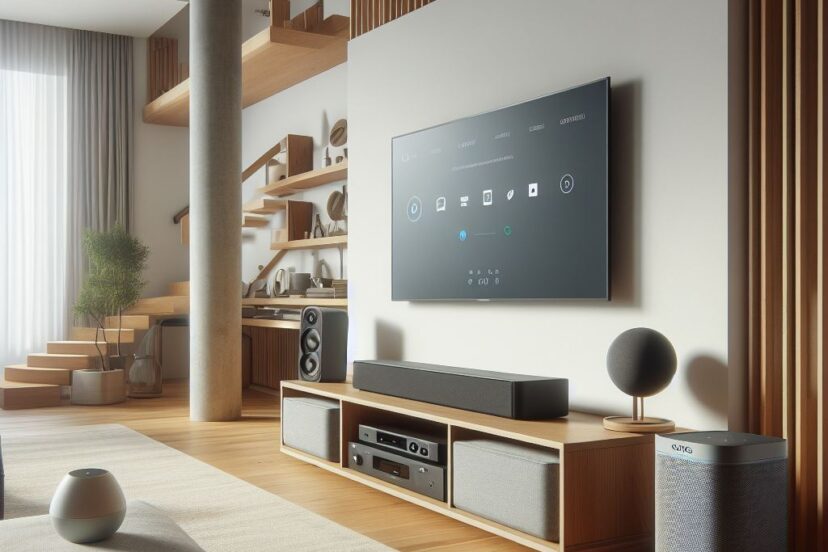
In enjoying my audio experiences, I’ve found the Port to be a nifty addition to my existing stereo setup. It’s designed to breathe new digital life into traditional stereos, allowing me to stream music and more with ease. Using the Sonos app or AirPlay 2, control is at my fingertips, and expanding the system across multiple rooms is surprisingly straightforward.
The ability to play music, podcasts, audiobooks, and access internet radio via my amplified equipment adds a modern twist without the need for a complete hardware overhaul. I appreciate the seamless integration into my existing audio ecosystem, with the extra advantage that I can even stream my vinyl and CD collection to Sonos speakers elsewhere in the house.
The direct streaming from my iPhone is fluid, and Siri’s inclusion to command Apple Music is a nice touch. Lastly, the line-in feature proves handy for playing audio from various devices, not just my phone, directly through my stereo. Despite its unassuming size, the Port has proven to hold its own as a central hub for my home’s audio streaming needs.
Check Price on Amazon
Seamless Streaming Across Devices
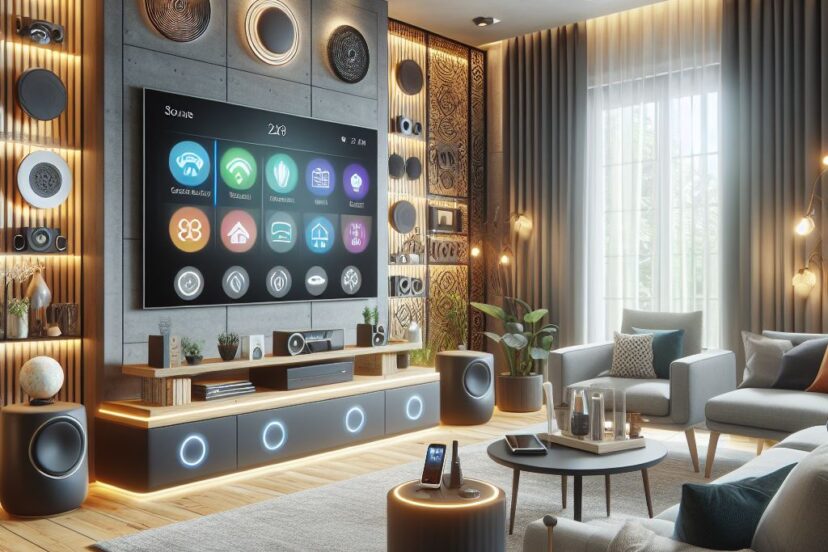
In my experience, the Sonos Port excels at making older audio setups feel new again by allowing for effortless streaming across devices. I’ve been particularly impressed with how it connects to a traditional stereo, enabling me to stream my favorite music and podcasts with ease. The control is intuitive through the Sonos app or Apple AirPlay 2, and I found it very convenient to send audio from my iPhone directly to the stereo.
It must be noted, though, that the Port isn’t the most budget-friendly device out there, but the investment seems justifiable for dedicated audiophiles looking to integrate modern streaming capabilities without replacing their high-end equipment. Although some may find the setup process tricky, once up and running, the expansion of sound across the rooms is simple and stable.
When I connected my turntable to it, the sound distribution to the Sonos speakers in my home was seamless, giving my vinyl records a breath of new life. One downside is that the Sonos Port doesn’t come with an amp or speakers, which is expected given it’s a streaming component, but it’s something to consider if you’re expecting an all-in-one solution. Despite this, integrating my existing stereo setup with the broader Sonos ecosystem was straightforward and has transformed my listening experience.
High-Quality Sound Performance
In my recent listening sessions with the Sonos Port, I noticed its ability to effortlessly enhance the sound quality of my existing stereo system. While it’s true that the Port doesn’t come with an amplifier or speakers, its strength lies in its streaming capabilities which have given my old speakers a new lease on life. The clarity of sound is remarkably pristine, which made my collection of vinyl records played through a connected turntable sound absolutely delightful.
However, despite its high-quality audio performance, the Port does have its drawbacks. The device comes with a steep price tag, and some users might find the setup to be more complex than expected. I’ve read a few accounts of people struggling with network issues, though my own experience with installation was fairly straightforward.
It’s worth noting that when the Port is functioning smoothly, it seamlessly integrates into a Sonos ecosystem and works wonders with external amps and traditional components. My Harbeth speakers sounded exceptional with this component. For those willing to invest in quality and navigate through the initial setup, the Port is a robust choice for audiophiles looking to modernize their sound system while retaining the authenticity of their music’s sound.
Expand Your Home Sound System

Check Price on Amazon
From personal experience, integrating the Sonos Port into my existing audio setup was a seamless affair. With the Port, I brought new life to my old stereo, turning it into a smart streaming powerhouse. Streaming music, podcasts, or even vinyl records throughout the house became ridiculously simple.
The Sonos app is the central hub for control, and with Apple AirPlay 2 compatibility, playing music from my iPhone was a breeze. I didn’t need to invest in new speakers for every room—connecting the Port to my stereo effectively spread the music to other Sonos speakers I have scattered around.
However, it’s worth noting that the Port doesn’t come cheap. While I appreciate the simplicity and the clean integration into the Sonos ecosystem, the cost might be a hurdle. Setting it up was fairly straightforward for me, but I’ve heard that some may find the process a bit tricky, and tech support might not always solve issues on the first try.
What impressed me most was the ability to tie in my traditional components like a CD player and turntable. Yet, for some, the absence of an amp in the Port might be a downside. I find balancing the quality of features with the price point essential when considering the value it brings to your sound system.
Voice Control and Compatibility
Recently, I had the opportunity to set up the Sonos Port in my home audio system. Initially, I was curious about how it would integrate with existing devices, but it turns out the Port is quite versatile when it comes to compatibility. With straightforward connectivity options, it easily hooks up to a stereo or receiver.
I was particularly impressed with how seamless the voice control aspect worked. Whether I was using Siri on my iPhone or my iPad, I could effortlessly ask to play content from Apple Music, making it a hands-free experience. This feature notably boosts the convenience factor for users already entangled in Apple’s ecosystem.
For those moments when I preferred using the Sonos app or even Apple AirPlay 2, they provided an alternative intuitive control method. However, the reliance on ethernet for connectivity might be a limitation for setups where a Wi-Fi connection would be more practical and less restrictive.
The ability to stream not only online content but also my vinyls and CDs to other Sonos speakers in the house without significant loss of sound quality is a feature I found highly useful. Yet, I do wish it had more streaming service integrations direct from the device for users who might not be as invested in the Apple platform. Overall, the experience felt modern, blending the traditional components with current technology successfully.
Design and Connectivity
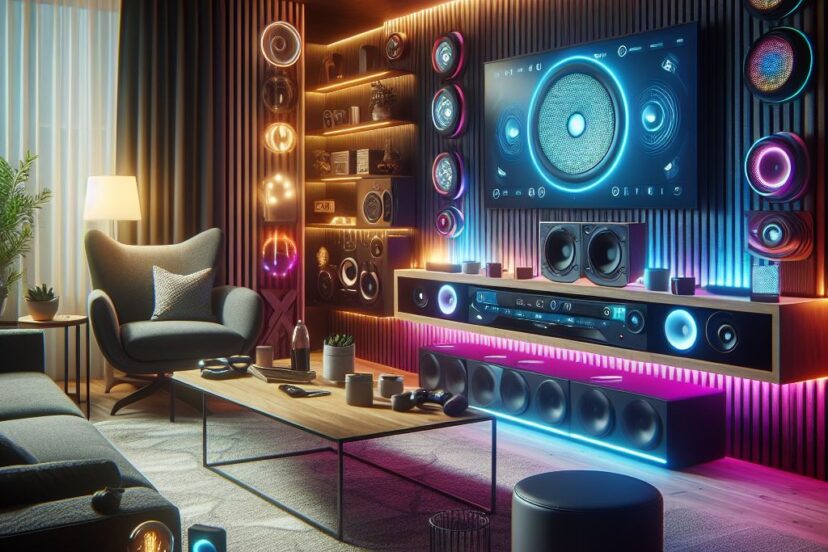
Having had a hands-on experience with the Sonos Port, I find its minimalist and compact design quite attractive. Tucked neatly in an audio setup, it doesn’t scream for attention, yet its matte black finish gives it a modern touch that complements any room. As for connectivity, it delivers impressively. The setup was straightforward—I connected it to my existing stereo system with no hassle, and the wired Ethernet option ensured a stable streaming experience without any drop in connection.
Streaming audio from various sources was a breeze. I streamed my playlists directly through the Sonos app and Apple AirPlay 2 with no lag. Interconnectivity within my home audio ecosystem was seamless, as I could send vinyl records playing in my living room to the Sonos speakers in my bedroom. Although, the reliance on a stable network for optimal performance is something to be mindful of.
Overall, the device strikes a balance between aesthetic discretion and functionality. My only nitpick is that while it promotes a clutter-free space, the additional cables required for connection may require some cable management. However, it doesn’t diminish the fact that if integrated smartly, it becomes an invisible but powerful cornerstone of your home audio setup.
Pros and Cons
After spending some time with the Sonos Port, I’ve had the chance to thoroughly test its capabilities. This device has made a significant difference in how I experience music at home, and I’m eager to share the highs and lows I’ve encountered.
Pros
- Seamless Integration: I found adding the Port to my existing audio setup to be a breeze. It allows for easy control through the Sonos app or Apple AirPlay 2, which is incredibly convenient.
- Flexibility: What really impresses me is the versatility. Not only does it effortlessly stream music, podcasts, and more, but I also have the ability to play vinyl and CDs through it, effectively bridging modern streaming with classic formats.
- Good Sound Quality: The sound quality has not disappointed. Whether I’m enjoying my favorite tunes or listening to audiobooks, everything comes through crystal clear, enhancing my listening experience with my amplified audio equipment.
- Whole-Home Audio: As someone who has multiple Sonos products, the ability to sync with other Sonos speakers around the house and stream stored audio files is an excellent feature.
Cons
- High Price Point: The first thing that struck me is the price. The Port is quite an investment, and given that it doesn’t include an amp or speakers, some might find it a bit steep for a streaming component.
- Setup Challenges: Though I didn’t have too many issues, I recognize that setup isn’t completely straightforward for everyone. Some users report difficulties with network recognition, which could lead to frustration.
- More Suited for Tech-Savvy: If you’re not particularly tech-savvy, or if patience isn’t your virtue, the installation process can seem daunting. It might require more technical knowledge or a call to customer support to get everything up and running smoothly.
- Limited to Sonos Ecosystem: Finally, if you’re not already invested in Sonos speakers, the Port’s true potential might be lost on you. It shines brightest when connected to other devices in the Sonos lineup, meaning you might have to commit further to the ecosystem to get the most out of it.
Check Price on Amazon
Customer Reviews
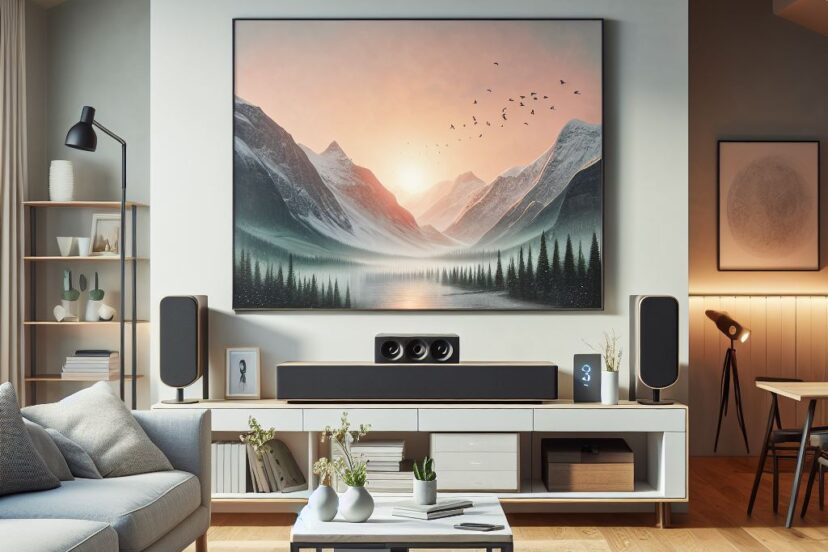
I’ve recently had the chance to use the Sonos Port, and numerous customers seem to echo my appreciation for its versatility and performance. The Port effortlessly bridges older sound systems to today’s digital streaming world. From my experience and accounts of other users, setting it up is a breeze for some, especially if you’re expanding an existing Sonos system. Users report excellent sound clarity when connected to high-quality speakers, and the ability to control legacy components remotely is a game-changer.
However, it’s important to note that some customers found it tricky to integrate with their home networks, and the price point did raise a few eyebrows. A common point of consensus is that it’s worthwhile for bringing traditional audio equipment into the Sonos ecosystem. Yet, for anyone expecting a plug-and-play solution, it might require a bit more patience and possibly support from tech services.
In summary, the Port’s performance is top-notch but consider the potential for setup challenges and whether the investment aligns with your expectations for a modern sound system component.
Conclusion for Sonos Port
After spending some time with the Sonos Port, I’m genuinely impressed by its versatility in integrating with existing stereo systems. It effortlessly brought my older equipment into the modern, wireless world, allowing for easy streaming from various services. The setup was quite straightforward for me, and the noticeable clarity of sound made a significant difference to my listening experience, especially with high-quality speakers.
On the downside, it is definitely on the pricier side which could be a deterrent for some. Also, a few users might find installation and network stability a bit challenging, as the experience seems to vary. Tech support might not always provide the rapid solutions expected for such a premium device. Despite these concerns, the overall performance of the Port has been excellent in my use, making it a solid choice for enthusiasts looking to blend their high-end audio equipment with the convenience of modern streaming technology.
Frequently Asked Questions about Sonos Port
Recently, I got my hands on the Sonos Port, a device that claims to breathe new life into existing stereo equipment by integrating it into a modern streaming ecosystem. In my time using it, a few questions have come up quite often among users.
1. How can I integrate my wired speakers with the Sonos system using Sonos Port?
Integrating wired speakers with the Sonos Port is simpler than you might expect. Once you connect your traditional stereo to the Port via the included audio cables, you essentially turn your existing setup into a smart system. The Sonos app then detects the Port, and you can control your wired speakers as part of your multi-room audio arrangement. The setup works flawlessly and I found it to be a convenient solution without compromising sound quality.
2. What are the steps to set up the Sonos Port for the first time?
Setting up the Sonos Port is a straightforward process:
- Plug in the Port to your power source.
- Connect it to your stereo or receiver using an RCA cable.
- Attach the Port to your home network via Ethernet or through Wi-Fi setup in the Sonos app.
- Launch the Sonos app on your smartphone or tablet and follow the prompts to add the Port to your system.
The app guides you through the entire process, which took me just a few minutes to complete.
3. Which wireless speakers are compatible with the Sonos Port?
The Sonos Port is compatible with any Sonos speakers, which is part of its appeal. Whether you have the latest Sonos One or an older Play:1, they all can be connected to create a synchronized audio setup. It’s impressive how seamlessly they work together, and I’ve been particularly pleased with the sync and sound distribution between my mix of Sonos devices.
4. Can you provide instructions for accessing the Sonos Port manual?
Should you need to dive into the nitty-gritty, accessing the manual for the Sonos Port is no hassle at all:
- Go to the Sonos support page on their website.
- Enter “Sonos Port” into the search bar.
- Select the Sonos Port from the search results.
- Download the PDF version of the manual directly to your device.
Alternatively, the Sonos app also contains a lot of helpful information and troubleshooting steps.
5. What are the benefits of using the Sonos Port over the Sonos Connect?
The Sonos Port offers several improvements over its predecessor, the Sonos Connect. First, the Port includes an updated DAC (Digital-to-Analog Converter) which means better sound quality. Furthermore, it supports Apple AirPlay 2, making it easier for iPhone and iPad users to stream audio directly to their stereo system. I also noticed a more streamlined design, which is a nice touch for keeping your setup looking modern.

